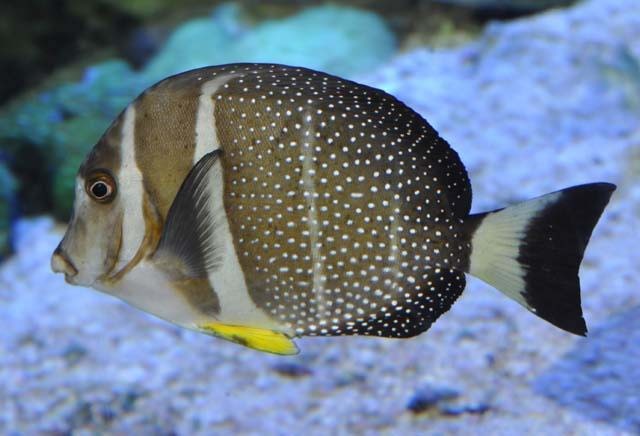The Mustard Guttatus Tang, also known simply as the Guttatus Tang, is scientifically named Acanthurus guttatus. It’s a beautiful species of surgeonfish that isn’t as commonly kept in home aquariums as some other tang species, but it certainly has its enthusiasts.
Appearance: The Mustard Guttatus Tang is predominantly a mustard yellow color with blue-edged eyes. It has a slightly elongated body compared to some other tangs and may exhibit some scattered blue or white spots, especially when younger.
Habitat: In the wild, they are found in the Indo-Pacific region, especially around the Philippines, Fiji, and in the Great Barrier Reef.
Aquarium Care:
- Tank Size: As with many tangs, they need ample swimming space. A tank of at least 125 gallons (475 liters) is recommended, though larger is always better.
- Diet: They are primarily herbivores. In the aquarium, their diet should consist of marine-based seaweed, spirulina, and other herbivorous foods. They can also eat some meaty foods, but veggies should be the bulk of their diet.
- Tank Mates: Generally peaceful, but like many tangs, they can be aggressive towards other tangs, especially of the same or similar species. It’s best to introduce them last if you’re planning a community of multiple tang species.
- Environment: They thrive in a well-decorated tank with plenty of hiding spots. Live rock formations can offer both grazing opportunities and hiding places.
- Water Parameters: Maintain typical marine parameters – salinity close to natural seawater, temperatures around 76-80°F (24-27°C), and pH around 8.1-8.4.
- Health: Like other tangs, they can be susceptible to marine ich (cryptocaryon irritans) and other common saltwater fish diseases. A proper quarantine process for new fish and maintaining good water quality can help in prevention.
Conclusion: The Mustard Guttatus Tang is a beautiful addition for those looking to keep a somewhat less common species of tang. As with all marine fish, proper care, a suitable environment, and attention to diet will go a long way in ensuring they thrive in the home aquarium.

